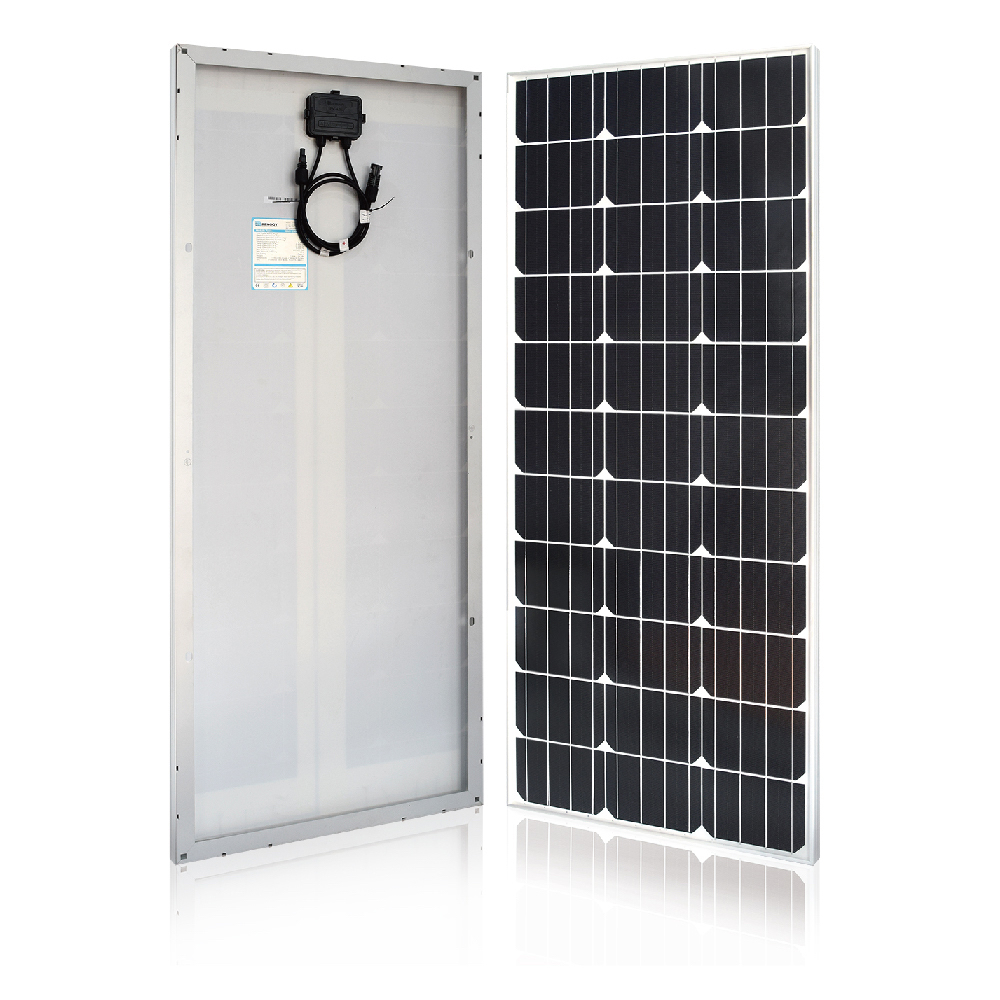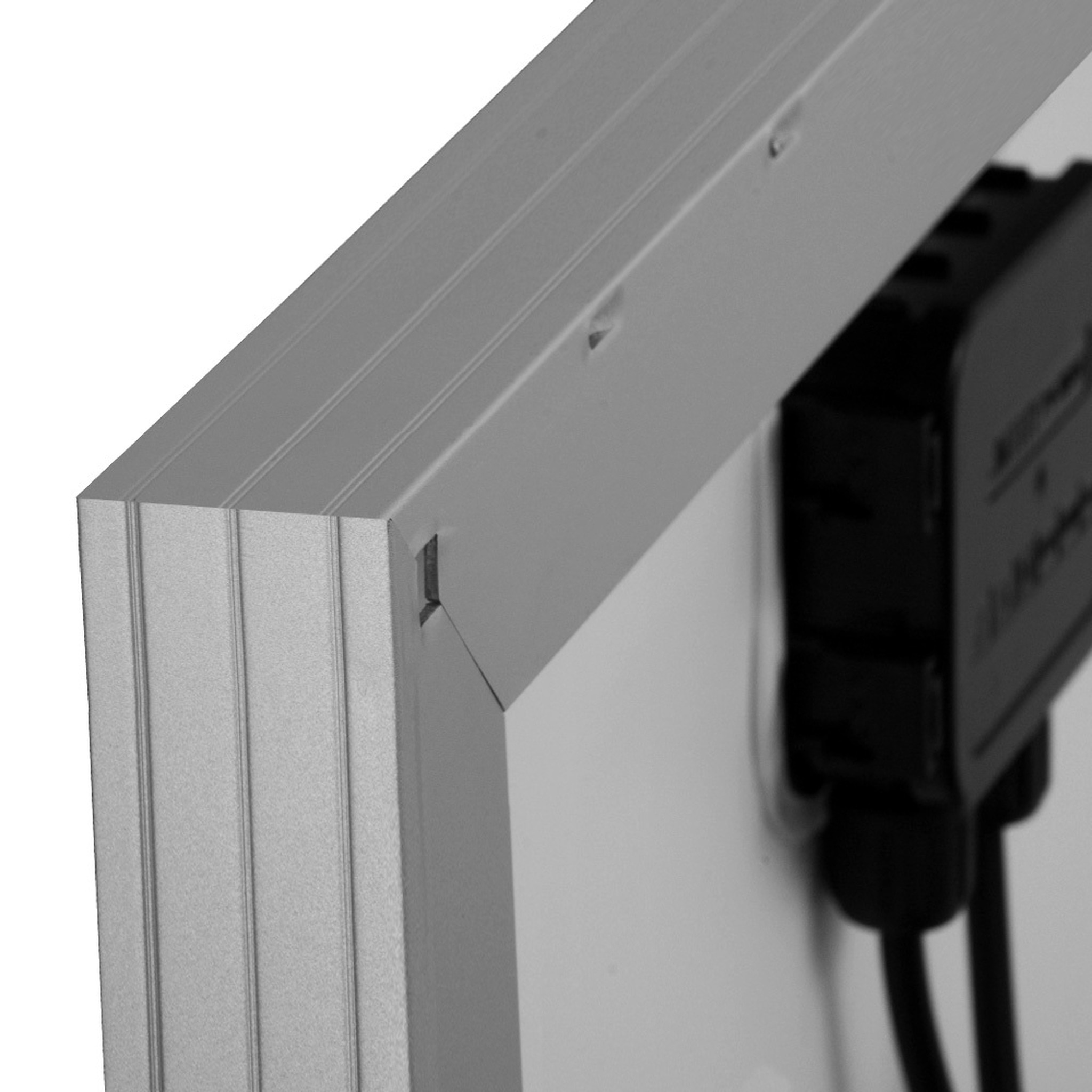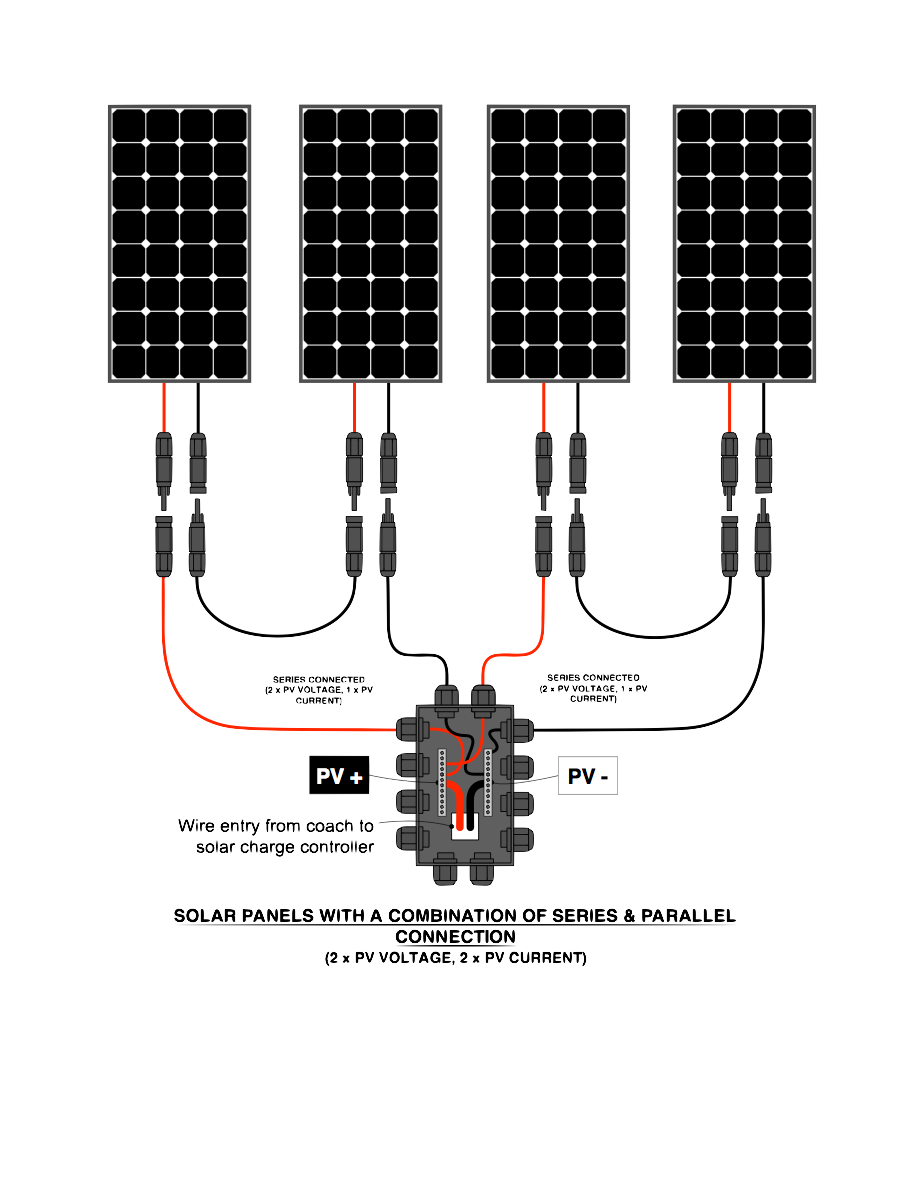Compact High Efficiency Solar Panels
Solar systems add an extra dimension to your off-grid experience with the ability to charge your battery without a shore power connection. Enjoy the benefits of free solar energy and feel good about using a renewable energy source on the road.
Boundless recommends and installs Renogy and ZAMP solar panels that have been used extensively in various applications including mobile installations for more than 10 years.


Solar Panel Features - Efficient, Durable Panels for Mobile Applications
Monocrystalline Panels - More Efficient
Boundless installs Monocrystalline panels. Monocrystalline panels use high-efficiency cells that help increase module efficiency which is important where panel surface area is limited due to roof space, maximizing output is key. Typical cell efficiency for Monocrystalline panels is between 22% and 21%. Polycrystalline panels have a typical cell efficiency of approximately, 18.5%.
Bypass diodes minimize power drop caused by shade and ensure excellent performance in low-light environments.
Reliable
Advanced encapsulation material with multi-layered sheet laminations enhance cell performance and provide a long service life. EL tested solar modules; no hot-spot heating guaranteed. TPT back sheet ensures smooth performance over a long period of time.
Durable
Guaranteed positive output tolerance (0-3%); withstands high winds (2400Pa) and snow loads (5400Pa). Corrosion-resistant aluminum frame for extended outdoor use, allowing the panels to last for decades. Anti-reflective, high transparency, low iron-tempered glass with enhanced stiffness and impact resistance. IP65 rated junction box provides complete protection against environmental particles and low pressure water jets.
Solar Panel Installation Basics
A positive and negative wire is run from each solar panel to a roof top mounted combiner box where all positives and negative wires are commoned together via terminal strips to enable one larger positive and one negative wire for connection to the solar charge controller.
The charge controller is installed inside the coach as close to the battery as possible. See more details about solar charge controllers here.
Properly sized wiring must be used to connect from solar panels to the combiner box and then from the combiner box to the solar charge controller to minimize losses.
Wiring connections at solar panels are MC4 connectors which are industry standard for solar panel wiring. Boundless uses large 10ga PV wire to connect from the panels to the combiner box. This is larger than the typical 12ga wire to minimize losses.
Connections at the combiner box are via weather proof cable glands and a terminal strip to enable quick customization of cable lengths to suit the installation.
Connections from the roof top mounted combiner box to the solar charge controller are via a terminal strip at the combiner box and terminals at the charge controller. Guidance on pairing solar panels with charge controllers is available on the Solar Charge Controller page in the Reference section.
Guidance on parallel or series wiring of solar panels is provided below.
Extend Off-grid Stays with Solar
Silently charge your battery. One to two panels for battery maintenance and four plus panels for substantial charge capability suitable for RV's and travel trailers with larger demands. An essential addition for your next off-grid trip.
See the Reference section has more details on the following: -
- Solar Panel Performance Criteria
- Should I Use Parallel or Series Connection?
- Matching solar charge controllers to solar panels
- How many solar panels do I need?
Solar Panel Overview
Power
100W
Efficiency
21-22%
Voltage, Vmp
17.7 - 18.9V
Current, Imp
5.29 - 5.70A
Connection
MC4
Weight
15.0 - 16.5lb
Full Range of Panel Sizes Available
Boundless will generally use the largest panels that will fit. 100W panels are typically used for Airstream travel trailers and smaller RV's, 200W panels generally fit well on larger RV's. 320W + panels can be used for larger solar arrays as needed.
Compact and Lightweight Solar Panels that are Ideal for Mobile Applications

High Efficiency Compact Panel Options for Challenging Applications
The Eclipse panel is a high efficiency monocrystalline rigid panel with 100W power in a compact lightweight frame ideal for RV or travel trailer roofs where space is at a premium.

Rigid Frame Panels for Durability
Rigid frame solar panels are more durable and resistant to snow, wind rain and impact loads than flexible panels. Boundless offers two specifications to suit various applications.

Rooftop Installation with MC4 Weatherproof Connectors
Junction boxes and wiring with pre-terminated MC4 connectors for reliable long term connections and easy disconnection for removal. Rooftop combiner box is provided to enable multiple panels to be combined.

